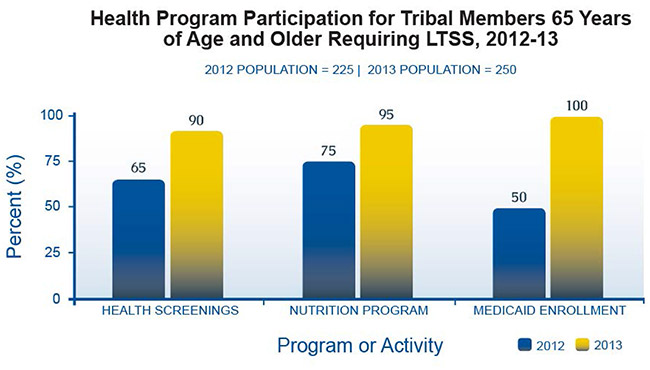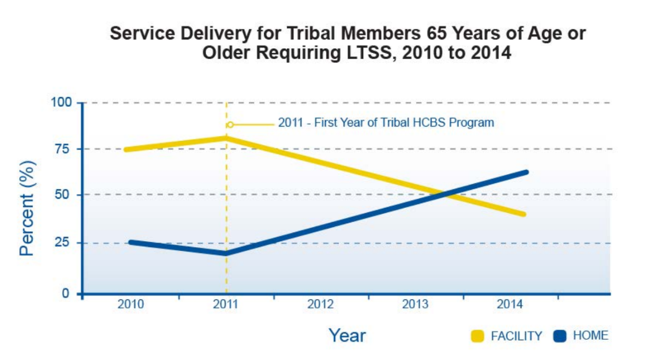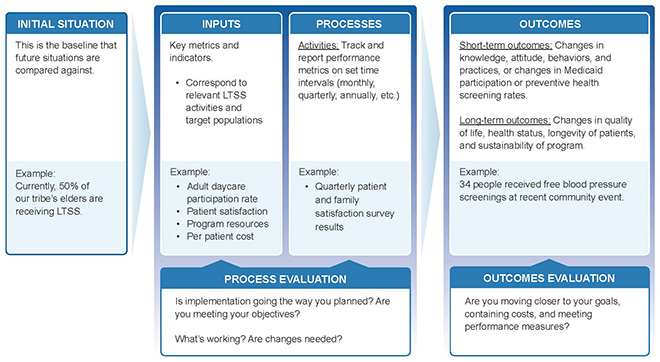Step 7: Evaluation
Once your community has created an LTSS program or modified an existing program, it is important to measure the program’s impact. Evaluation measures your progress toward goals and objectives and helps identify successes and areas for improvement.
Evaluation questions
Your evaluation should answer these basic questions:
- How do current program outcomes compare to your baseline measurements (the starting numbers you identified in your needs assessment)?
- Has the program achieved the objectives you set?
- Has the program achieved its goal(s)?
- Is the program sustainable?
- Have factors of program cost changed(e.g., wages, rent, cost of equipment)?
- Is the program creating enough revenue to cover its operating costs?
- Are there opportunities for growth or maintenance of services over time?
Key evaluation elements
Use the performance metrics you identified in Step 2 measure changes regularly (monthly, quarterly, or yearly). Then summarize your findings using a logic model, which is described below.
Example: Program participation over time

Example: Services delivered by different program types over time

Analysis of performance metrics
Use your performance metrics to answer these questions:
- Do the current program activities and results match what you planned for?
- Is your program effective?
- How do key indicators (e.g., elders' health outcomes, level of collaboration between partners) compare with the measurements you took before program implementation?
- Based on this comparison, how did the program impact certain indicators?
- Did the program achieve the outcomes you wanted it to achieve?
- Is your program efficient?
- What is the relationship between how your program uses resources and the LTSS outcomes it achieves?
- How do different services compare to one another in the health outcomes they achieve? (Use recipients' health statuses to measure this.)
- What lessons can you learn from both met and unmet objectives?
- If you did not achieve your objectives, do your performance metrics show that your program is moving in the right direction?
- Can you think of ways to improve performance and meet the unmet objectives?
- Do your objectives still accurately represent what the program or community needs?
- Should objectives be changed, based on a new understanding of the LTSS program or the environment?
Logic model
Next, develop a logic model, which provides a structured way of organizing the information you discover from your evaluation. The logic model offers a picture of:
- The resources you have
- What activities you will do or have done
- Target results for your activities (outputs)
- Short- and long-term program outcomes
Example of an LTSS logic model

Evaluation Is a continuous process
Factors that affect your program—such as community demographics, health status, funding opportunities, and many others—evolve constantly. Continue to regularly measure LTSS needs in your community and consider whether your program meets those needs.
Because evaluation is ongoing, this step loops back into Step 1: Conducting a Needs Assessment. Using what you learn from evaluation, complete the steps in the roadmap again to implement any needed changes. This cycle should continue throughout the life of your program to ensure ongoing improvement.
See Intro to Evaluation for detailed information on program evaluation.